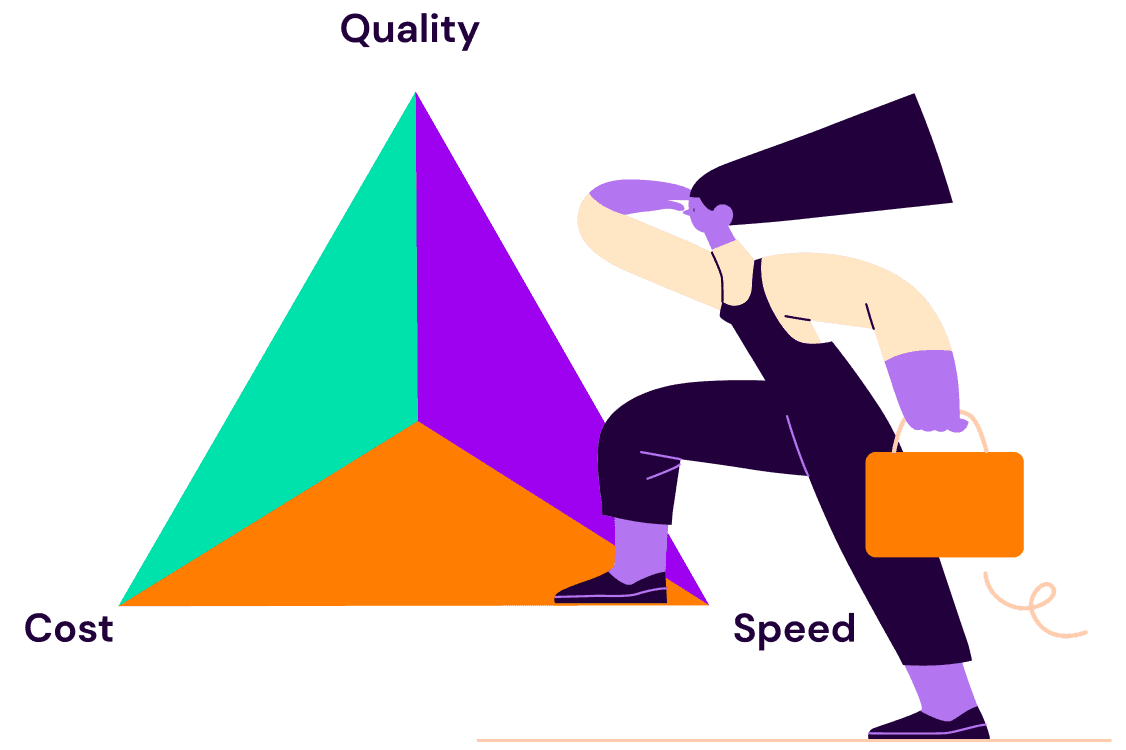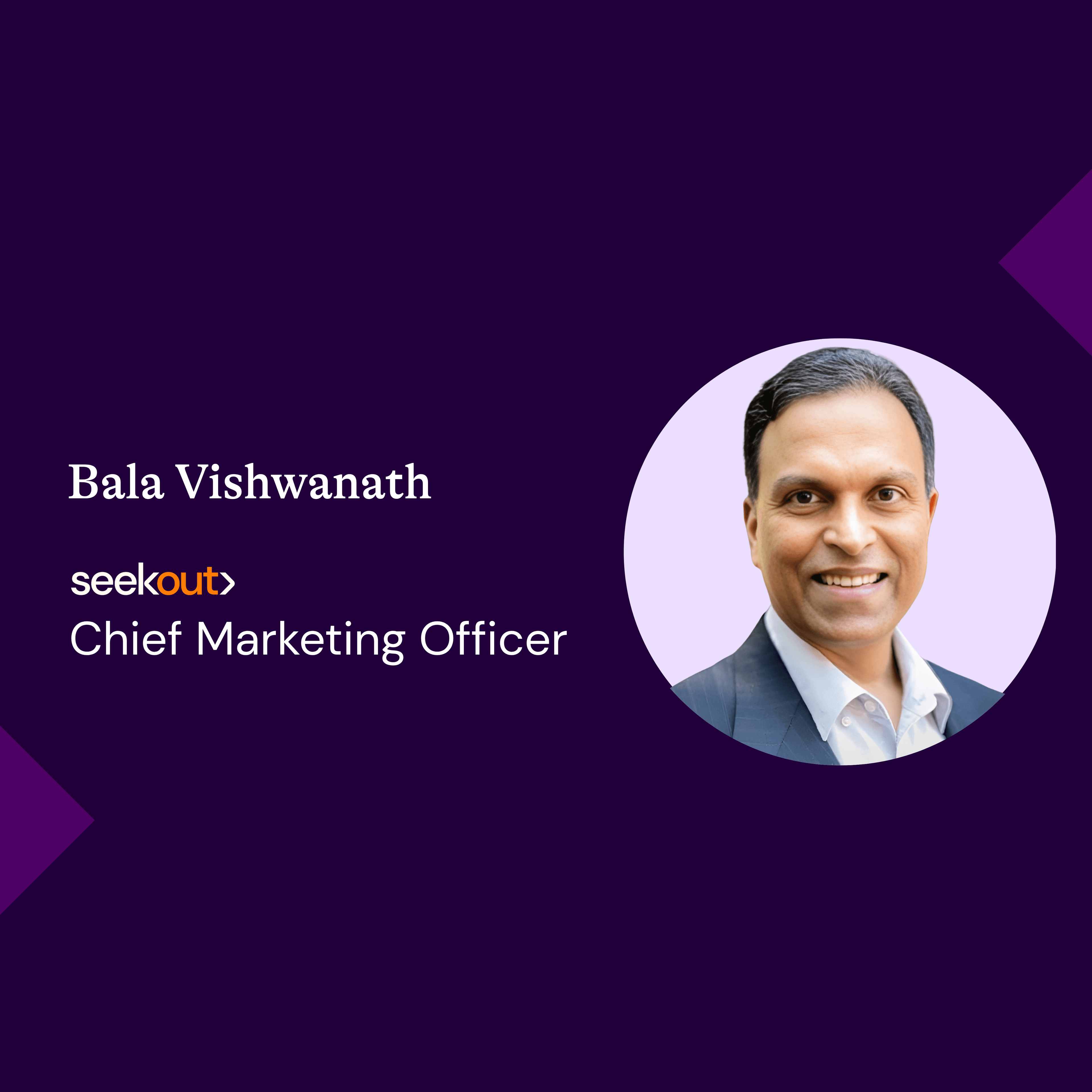
Back to blogs

Webinar Recap: A Recession Could End the Great Resignation, What’s Next?
The pandemic has demonstrated how much the future of talent acquisition is shaped by our economy and daily life. Fundamental shifts in the ways people view and approach work have dramatically evolved our labor landscape and left sourcing and recruiting teams scrambling to shift their hiring strategies. What can talent experts—and technology—offer to help us navigate this unique time?
In our recent webinar, “A Recession Could End the Great Resignation, What’s Next?” SeekOut’s Head of Customer Advocacy, Ed Pedini hosted a panel discussion with customers and TA leaders:
Jared Bazzell, Talent Acquisition Manager, CDW
Jason Boone, Talent Engagement Consultant, Alexander Mann Solutions
Tony Lioi, Senior Manager of Talent Technology, Alexander Mann Solutions
Let’s dive into the discussion themes and key takeaways for talent acquisition teams.
The labor market today: more confusion than clarity
It seems as though nobody can agree if we’re headed into, or already in, a recession. That’s understandable, considering a lot of conflicting labor statistics. In the United States, 4.2 million people quit their jobs in June, while unemployment remains historically low. Some organizations are hiring at an unprecedented scale, while others have slowed down, implemented hiring freezes, or even had layoffs.
What’s contributing to this unique time for the talent landscape?
Let’s start with the obvious. With the Great Resignation—or as some prefer to call it, the “Great Reorganization”—millions of people have voluntarily left their jobs in search of something different. The pandemic has allowed folks to take a step back, examine their values and decide what really matters to them when it comes to work-life balance. This shift in employee mindset has changed the talent landscape forever.
Industries are changing, too—both in the sense of what jobs are available, and who is filling them. For example, Ford announced layoffs for 3,000 employees in late August, as they shift their focus to more electric vehicles. We saw a similar shift with General Motors in 2018. At the same time, only 35% of people changing jobs are staying in the same industry.
As the pace of retirement among baby boomers continues to rise, so does the number of millenials and Gen Z people entering the workforce. This transition in employment has forced companies to adapt. People aren’t staying at the same company for years and years like they used to. If a job is not serving an employee's needs, they are more likely to change roles or companies than past generations. This could prove problematic for industries like defense which demand constant innovation but whose younger employees are still building tenure and expertise.
How are organizations responding to all of this?
Unsurprisingly, organizations are responding to our current labor landscape in a variety of ways. Some are having layoffs and hiring freezes, while others try to combat low employee engagement by ushering folks back into the office in person.
Many are reevaluating their policies, catering to their employees and candidates to be more attractive to talent. Companies are increasing wages, offering flexible working arrangements, and assessing the authenticity of their brands to ensure they’re desirable places to work.
Internationally, many trends follow the patterns we’ve witnessed in the United States, with the same challenging decisions to make about remote-first work, compensation, and strategies to meet hiring demands with attrition rates still high.
What advice can our panel of experts offer talent acquisition teams?
Know your business
Many recruiters support many different business lines, but it's important that recruiting managers give their teams the time to get to know the different business areas. Even understanding the basics will help build valuable relationships across departments. Encourage recruiters to go to networking events and get involved with people whose profession is recruiting. Get to know your peers, ask questions, and engage with the content others create. Lastly, data-driven talent acquisition leaders should have an understanding of how their replacement costs have changed, and where employees are going after they’ve left.
Make use of your technology
There are many ways technology can help you do more with less—like interview scheduling, assessments, and sourcing with AI. Embrace the technology you’ve paid for and implemented, and learn how to better leverage and optimize your tools. Without a plan to make the most of it, your tech won’t seem effective. That also means that if you have to reduce costs, you could have trouble justifying your investments and struggle even more with whatever tools and tech are ultimately left.
Just remember to be careful not to fall into the trap of thinking that technology can be a panacea to all your recruiting problems. Without a strategy for how your tech stack will be used or how your organization needs to change to make the most of your investments, you won’t actually succeed in solving your challenges.
Seek balance with remote work
At a time when so many people have adjusted to remote work, think critically about enforcing a return to the office policy. If you insist on bringing people back, your reasoning must resonate with your employees and provide them value. Consider that you may be limiting your potential talent pool if you’re only looking close to your office locations. There are clear benefits to having people together to meet, collaborate, and celebrate their wins—but think about how you can find a balance as more organizations embrace global, remote-first teams.
Be adaptable with sourcing
Organizations should be looking at talent planning, internal mobility, and upskilling and reskilling workers as critical strategies. Go beyond having an internal careers site and job posting notifications. Career pathways for employees and gig projects that help employees learn new skills are great for engagement and growth. This will help prove that you want to develop the employees to benefit both their future and the company’s goals.
Be mindful that this is no easy undertaking. Collectively, we need to change the paradigm so that employees are empowered to look internally first—and part of the challenge today is that it’s too easy to consider outside opportunities. Offer visibility and transparency into what’s available, and help your employees take more control of their own career destinies.
Be authentic
When people are your greatest asset, authentic and open relationships are invaluable. Think about how you engage with people you don't know—is it transactional, or genuine? Are you opening the door to engage with people and the content they create? Think beyond the role you have open now, and how you can build meaningful connections with candidates.
Want to learn more?
We’re grateful to our panel for such a wonderful discussion filled with great takeaways.
See us in action
Learn how SeekOut unifies people data to help organizations reach their talent goals
Request a demo



